Artist Rescues Northern Wei Dynasty Fonts From Hong Kong Signboards
Old Hong Kong gave people the impression of prosperous commercial streets with advertising signboards hanging high, distinctive both day and night. In the daytime, you could enjoy the staggered signboards with different sizes of calligraphy. At night, all the signboards were colorful and dazzling with neon lights. There was a majestic and powerful calligraphic style commonly used for signboards. This style inherited the essence of calligraphy from the Northern Wei Dynasty. It was square and thick without losing its elegance, symbolizing a strong, tolerant Hong Kong combining Eastern and Western cultures, filled with vitality. Chan King-lun (Right) visits various districts in Hong Kong to look for the “Northern Wei Style” fonts. The photo was taken on the street of Cheung Shan Wan in Hong Kong on Feb. 17, 2022. (Terence Tang/The Epoch Times) However, in recent years, the local authorities issued removal orders saying the signboards protruding from the eaves violated the Buildings Ordinance. Many standing signboards had to be removed and became the collective memory of Hongkongers. Kisslan Chan King Lun (also known as K-sir), a local font restorer, took two years to collect fonts from those signboards and saved them through digital restoration. Earlier this year, he released the first generation of the revival version of “Explosive Northern Wei Font Style” to the market for public use. Chan said that the “soul” of the fonts on those signboards would never die. He hopes the fonts he preserved are like planted seeds allowing future generations to revive the signboards. Signboard of Kwong Chen Jewellery & Goldsmith Company, taken on Feb. 17, 2022. (Terence Tang/The Epoch Times) Hong Kong-style Signboard Inherits The ‘Beiwei Zansyu Chinese Type’ The origins of the “Beiwei Zansyu Chinese Type” began when the nomadic tribe, Xianbei, established the Northern Dynasty in 490 AD, replacing the Xianbei language with Chinese. Emperor Xiaowen, the ruler then, moved the capital to Luoyang and carried out the Sinicization campaign, an important time when Buddhism was introduced to China. This distinctive calligraphy style has a unique place in Chinese history because of its strong, clear, and bold characters, as it was mainly carved by knife. The Northern Wei style, which took root in Hong Kong, was developed by the Qing Dynasty calligrapher Zhao Zhiqian and the modern calligraphers Au Kin Kung, Su Shijie, and Cheuk Siu Hang. Au was a native of Xinhui, Guangdong Province. He spent his life in education and founded the School of Calligraphy in Queen’s Road Central, making education and popularization of the art of calligraphy his life’s work. Nowadays, you can see the characteristics of Beiwei’s style on some of the streets of Hong Kong island, Kowloon, and the New Territories, such as the Tak Tai Pawn Shop (德泰押) at Sai Wan, the Ching Kai Meat Company (正佳肉食公司) in Sai Ying Pun, the Bangkok Bank signboard and the Kee Wah Bakery signboard. The brass embossed signboard of Cheung Sha Wan Meat Company can be identified as the work of Au Kin Kung. The photo was taken on Feb. 17, 2022. (Terence Tang/The Epoch Times) In March 2021, Hong Kong artist Chan was attracted by the vintage signboards in the old Kwai Chung Industrial Area. The old stores were disappearing quickly, so he devised an idea to restore the Northern Wei style. He wanted to digitally restore the fonts representing Hong Kong’s distinctive era. The Signboards Come Down, But their ‘Soul’ Lives On “In the past two years, removing signboards has been so fast as to… completely eliminate the old ones hanging above many streets. The sudden disappearance of signboards seems like a landmark suddenly disappearing! As the old buildings were demolished, the signboards were removed, the old stores closed down, and computerized writing replaced the handwriting masters, the once glorious Northern Wei style gradually became history,” Chan said. “I remember the signboard of Lau Piu Bonesetters (劉標跌打醫館) on the street in Yau Ma Tei. I hadn’t been there for a while and found it had disappeared. The “Beiwei Style” used on the signboard of Lau Piu Bonesetters, a typical Hong Kong street sign, has been demolished. (Courtesy of Chan King Lun) The brass embossed signboard of Loong Chu Mahjong Entertainment Company found in an old tenement building in Tai Kok Tsui faces demolition due to the recycling of the old building. Chan said that he could preserve the “soul” of the signboard so that one day when someone wants to make the same signboard again, they can use this set of fonts to easily recreate it. The word “Entertainment” of “Loong Chu Mahjong Entertainment Company” inspires Chan to restore the signboard characters. (Courtesy of Chan King Lun) It was critical to find the archetypes of these characters. For example, the characters 吳 and 女 in 娛 were exactly the style he wanted, and 吳 could become the main character, and 女 could become the supporting character in
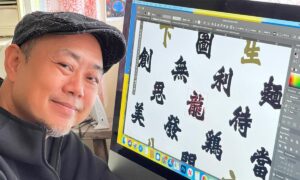
Old Hong Kong gave people the impression of prosperous commercial streets with advertising signboards hanging high, distinctive both day and night. In the daytime, you could enjoy the staggered signboards with different sizes of calligraphy. At night, all the signboards were colorful and dazzling with neon lights.
There was a majestic and powerful calligraphic style commonly used for signboards. This style inherited the essence of calligraphy from the Northern Wei Dynasty. It was square and thick without losing its elegance, symbolizing a strong, tolerant Hong Kong combining Eastern and Western cultures, filled with vitality.
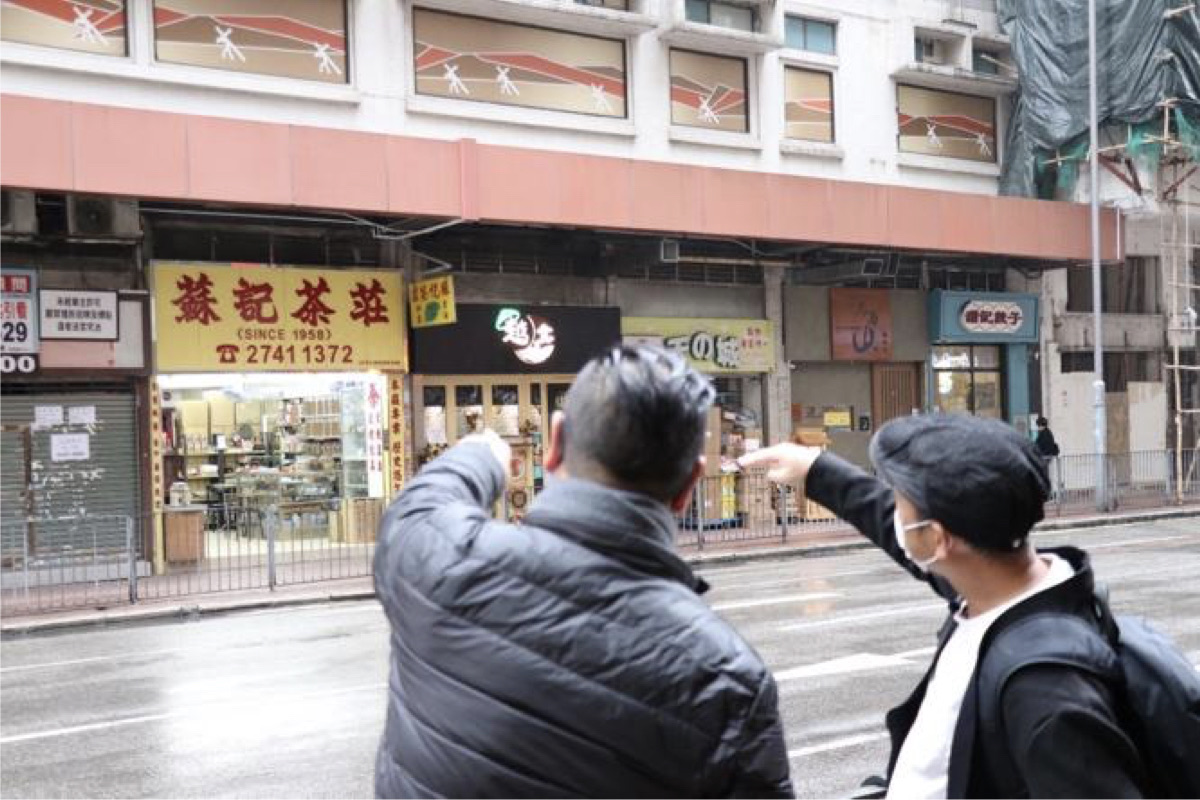
However, in recent years, the local authorities issued removal orders saying the signboards protruding from the eaves violated the Buildings Ordinance.
Many standing signboards had to be removed and became the collective memory of Hongkongers.
Kisslan Chan King Lun (also known as K-sir), a local font restorer, took two years to collect fonts from those signboards and saved them through digital restoration.
Earlier this year, he released the first generation of the revival version of “Explosive Northern Wei Font Style” to the market for public use.
Chan said that the “soul” of the fonts on those signboards would never die. He hopes the fonts he preserved are like planted seeds allowing future generations to revive the signboards.
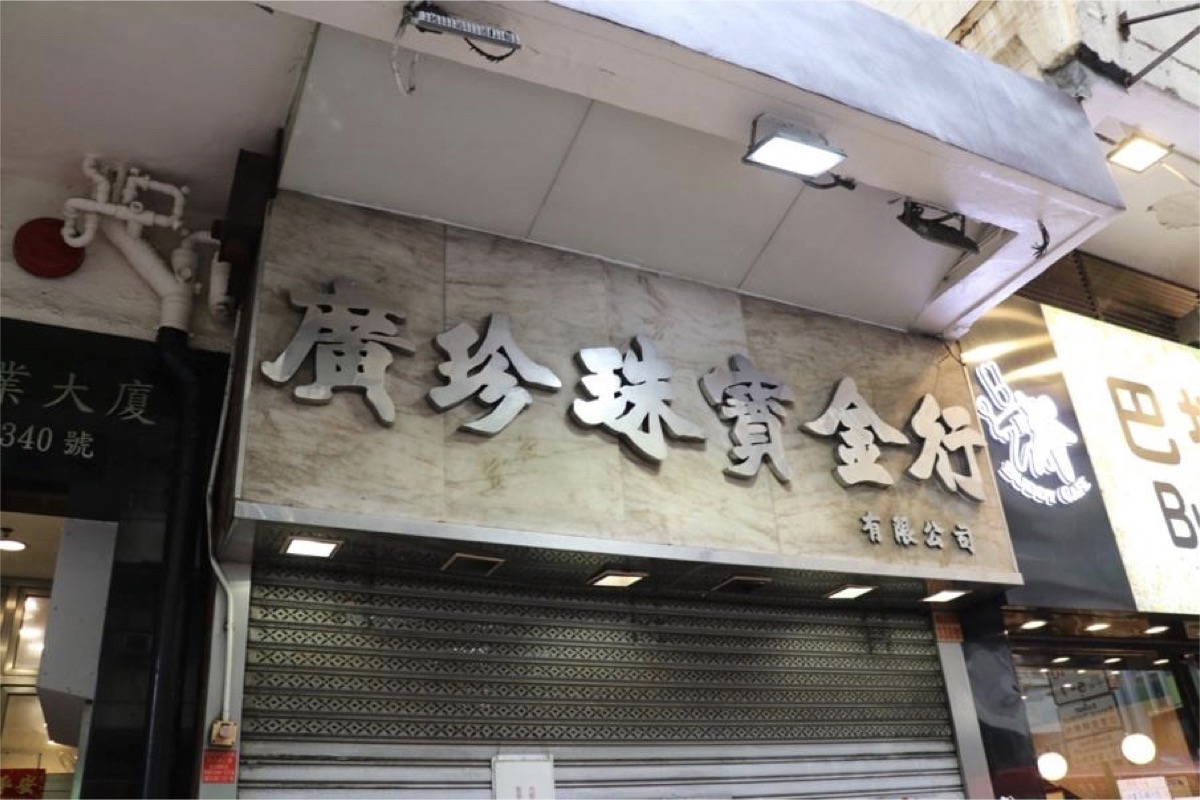
Hong Kong-style Signboard Inherits The ‘Beiwei Zansyu Chinese Type’
The origins of the “Beiwei Zansyu Chinese Type” began when the nomadic tribe, Xianbei, established the Northern Dynasty in 490 AD, replacing the Xianbei language with Chinese. Emperor Xiaowen, the ruler then, moved the capital to Luoyang and carried out the Sinicization campaign, an important time when Buddhism was introduced to China. This distinctive calligraphy style has a unique place in Chinese history because of its strong, clear, and bold characters, as it was mainly carved by knife.
The Northern Wei style, which took root in Hong Kong, was developed by the Qing Dynasty calligrapher Zhao Zhiqian and the modern calligraphers Au Kin Kung, Su Shijie, and Cheuk Siu Hang. Au was a native of Xinhui, Guangdong Province. He spent his life in education and founded the School of Calligraphy in Queen’s Road Central, making education and popularization of the art of calligraphy his life’s work.
Nowadays, you can see the characteristics of Beiwei’s style on some of the streets of Hong Kong island, Kowloon, and the New Territories, such as the Tak Tai Pawn Shop (德泰押) at Sai Wan, the Ching Kai Meat Company (正佳肉食公司) in Sai Ying Pun, the Bangkok Bank signboard and the Kee Wah Bakery signboard.
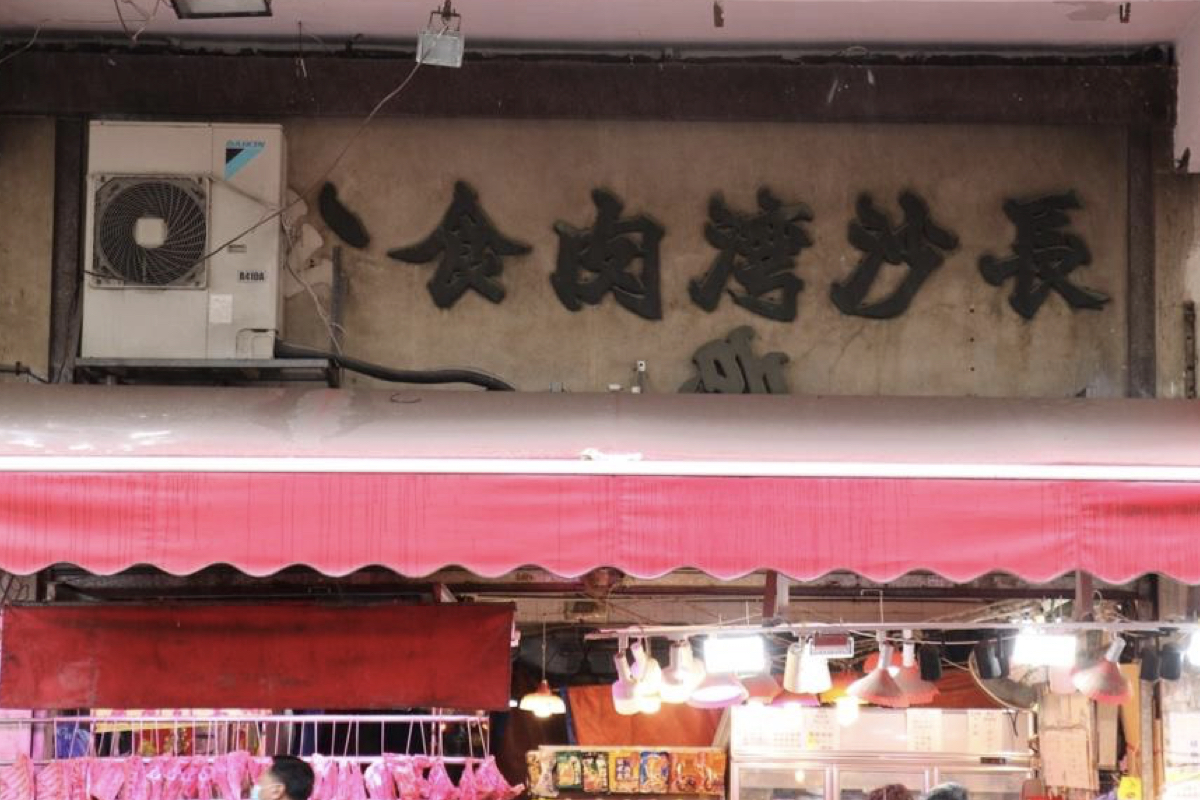
In March 2021, Hong Kong artist Chan was attracted by the vintage signboards in the old Kwai Chung Industrial Area. The old stores were disappearing quickly, so he devised an idea to restore the Northern Wei style. He wanted to digitally restore the fonts representing Hong Kong’s distinctive era.
The Signboards Come Down, But their ‘Soul’ Lives On
“In the past two years, removing signboards has been so fast as to… completely eliminate the old ones hanging above many streets. The sudden disappearance of signboards seems like a landmark suddenly disappearing! As the old buildings were demolished, the signboards were removed, the old stores closed down, and computerized writing replaced the handwriting masters, the once glorious Northern Wei style gradually became history,” Chan said. “I remember the signboard of Lau Piu Bonesetters (劉標跌打醫館) on the street in Yau Ma Tei. I hadn’t been there for a while and found it had disappeared.
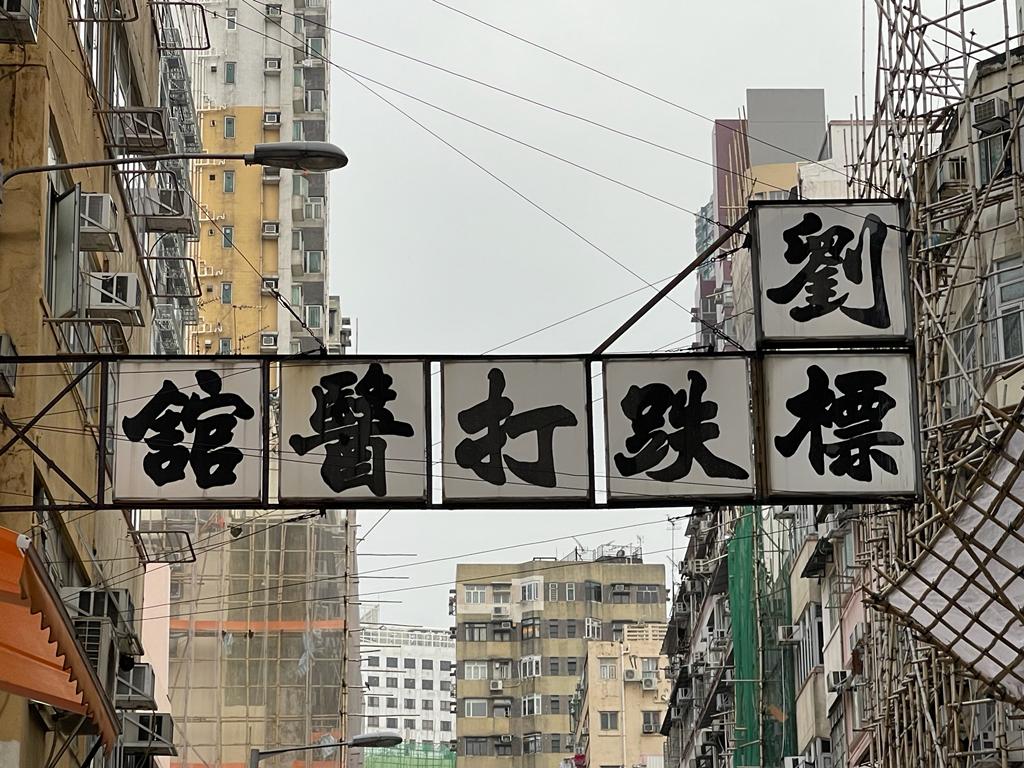
The brass embossed signboard of Loong Chu Mahjong Entertainment Company found in an old tenement building in Tai Kok Tsui faces demolition due to the recycling of the old building. Chan said that he could preserve the “soul” of the signboard so that one day when someone wants to make the same signboard again, they can use this set of fonts to easily recreate it.

It was critical to find the archetypes of these characters. For example, the characters 吳 and 女 in 娛 were exactly the style he wanted, and 吳 could become the main character, and 女 could become the supporting character in his character creation. He explained that since Chinese characters are composed of radicals and parts, he can combine them into different characters by collecting all the main characters.
The whole set of Chinese fonts has more than 8,000 characters. After recording the relevant characters, he fills in the missing ones by drawing them himself, then uses digital technology to shift the angle of each character, drawing each hidden stroke and adjusting the thickness and size.
He tries to fix each part and then merge them into the “Northern Wei Font Style” characters, and finally, he uses Unicode to create a computer font so that everyone can input and use them. In addition to the classical Beiwei fonts, he plans to release two thicker and thinner versions of Beiwei fonts to give everyone different choices in the design.
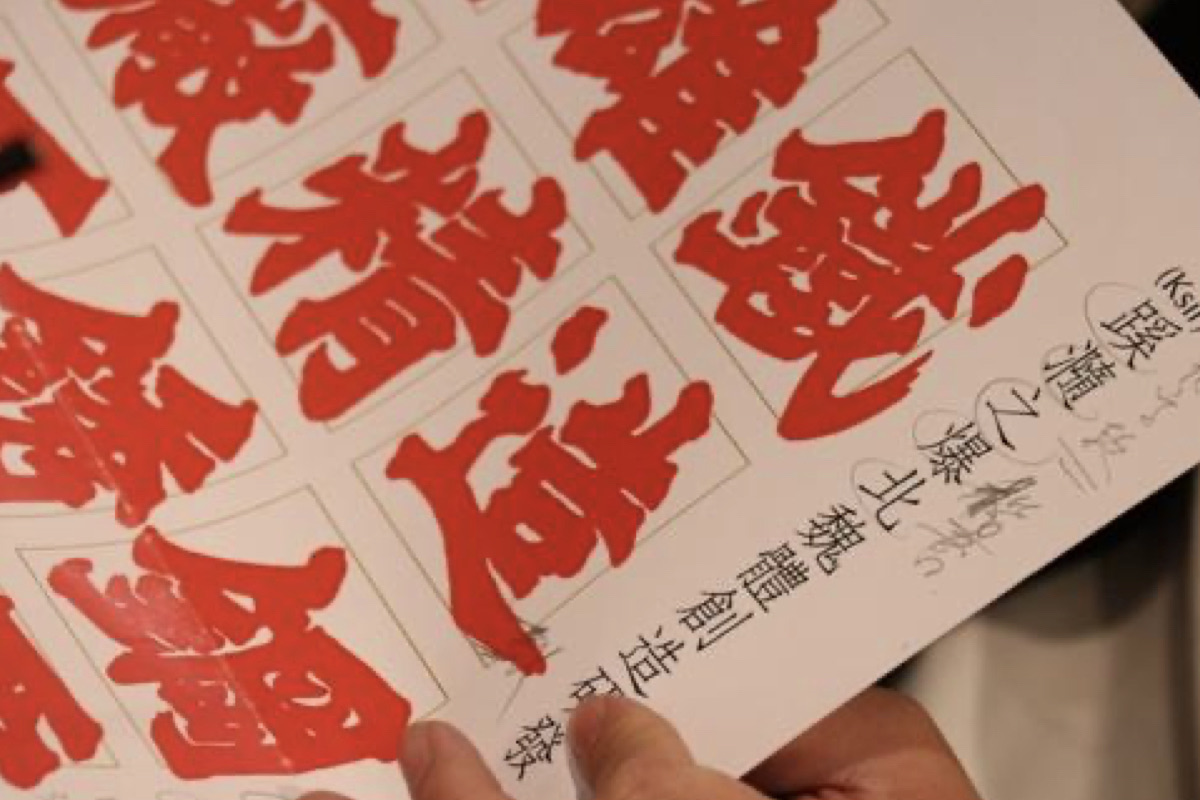
The original plan was to launch the “Explosive Northern Wei Style” in September 2022, which was postponed until January 2023. Chan said the difficulty of “making the characters” was much more challenging than expected: “There are many details to take care of. I am like a sculptor who has to make each character on the computer.
I had to find a prototype for each character, so it took almost four months to complete.” There was a time when he wanted to give up doing almost the same thing day after day, but he thought he was responsible for finishing the project he had started. “I cannot give up as so many people have already supported my project, so I must do my best to finish it.
Chan launched a crowdfunding campaign for the font on a Taiwanese website earlier. He found that half of his sponsors were clients from Hong Kong, Taiwan, and even Japan. After digitizing the font, he looks forward to the application, “Many Taiwanese design companies bought my fonts.
Last October, the ‘Taiwan-Hong Kong Food and Beverage Consultation (台港飲食切磋)’ event organized by the Nowhere Bookstore and the Hong Kong-Taiwan Economic and Cultural Co-operation and Promotion Council used my fonts and the fonts of Li Han-Kong Kai to design a poster.
Even the election team of President Tsai Ing-wen bought my characters in November and used them on the cover of their election broadcast, which I think is a great honor! He said that he would continue to introduce Taiwanese and Hakka characters in the future, which will further benefit different groups.
Chan thinks the most exciting scene would be the recreation of the Bei Wei-style signboards in Hong Kong. “Nowadays, many markets are undergoing renovation projects and searching for some design companies to do a unified style design. It would be wonderful if this font could be used one day and the entire market of 50 or 60 shops could use the Northern Wei Style. I do look forward to that.”







